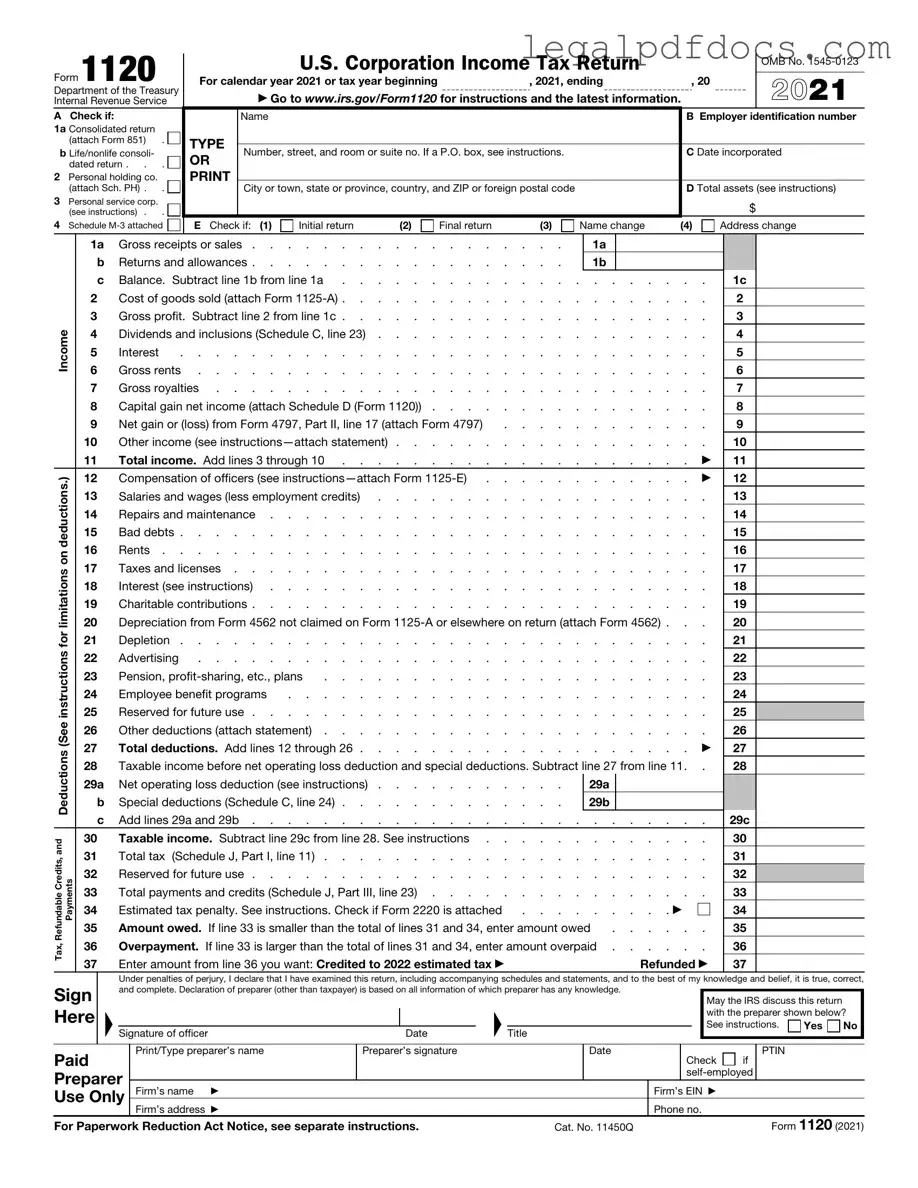The IRS Form 1120 serves as a crucial document for corporations operating within the United States, reflecting their financial activities over the course of a tax year. This form is not merely a requirement; it provides a comprehensive overview of a corporation’s income, deductions, and credits, ultimately determining the tax liability owed to the federal government. Corporations must report their earnings, which include revenue from sales and services, alongside any other income sources. Deductions play a pivotal role, allowing businesses to reduce their taxable income by accounting for necessary expenses such as salaries, rent, and utilities. Additionally, Form 1120 requires corporations to disclose information about their shareholders and any dividends distributed, ensuring transparency in financial reporting. Understanding the intricacies of this form can significantly impact a corporation's financial health and compliance status, making it essential for business owners and financial professionals alike to navigate its requirements with diligence and care.
